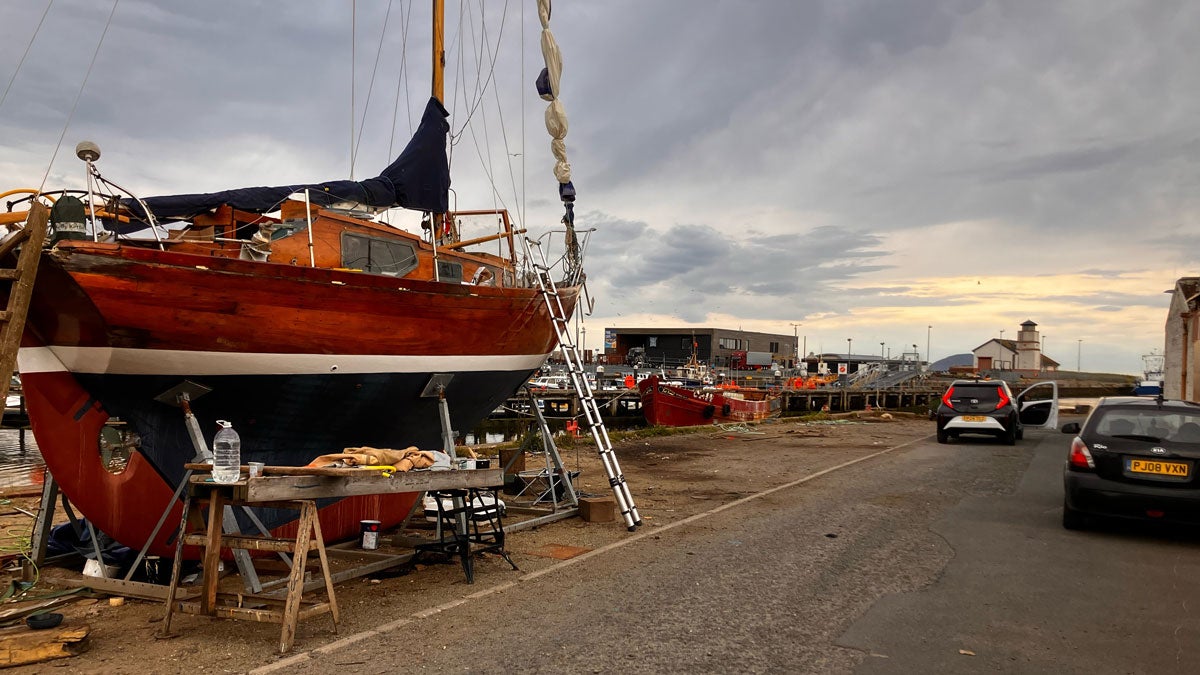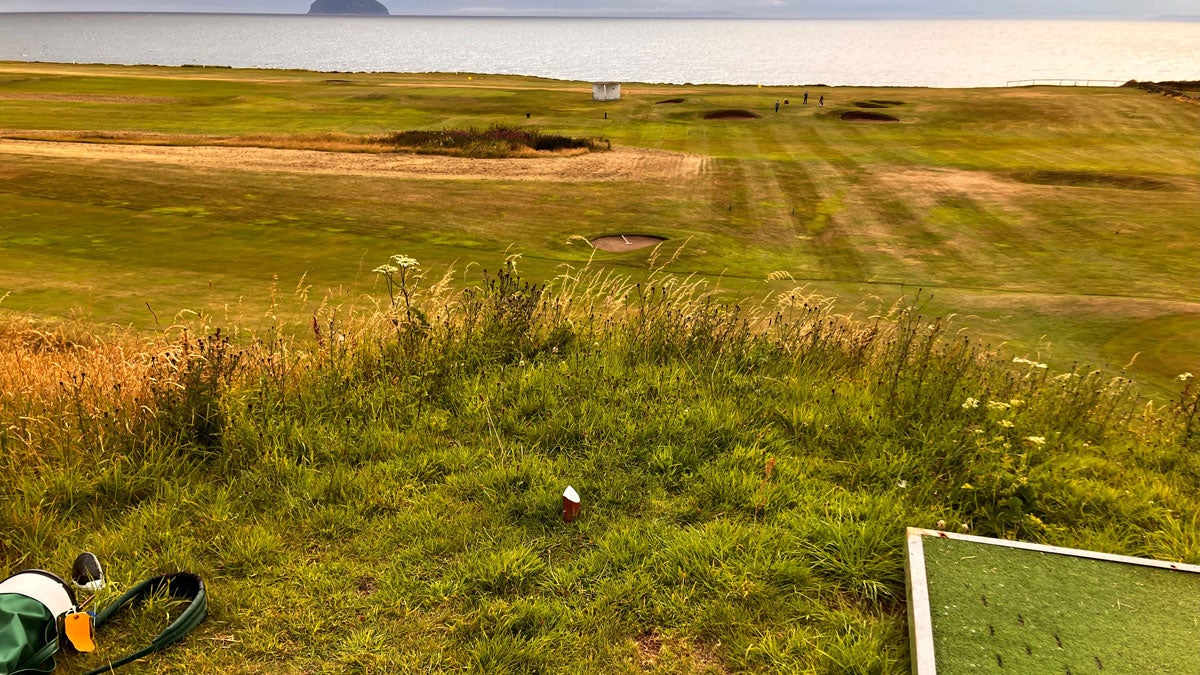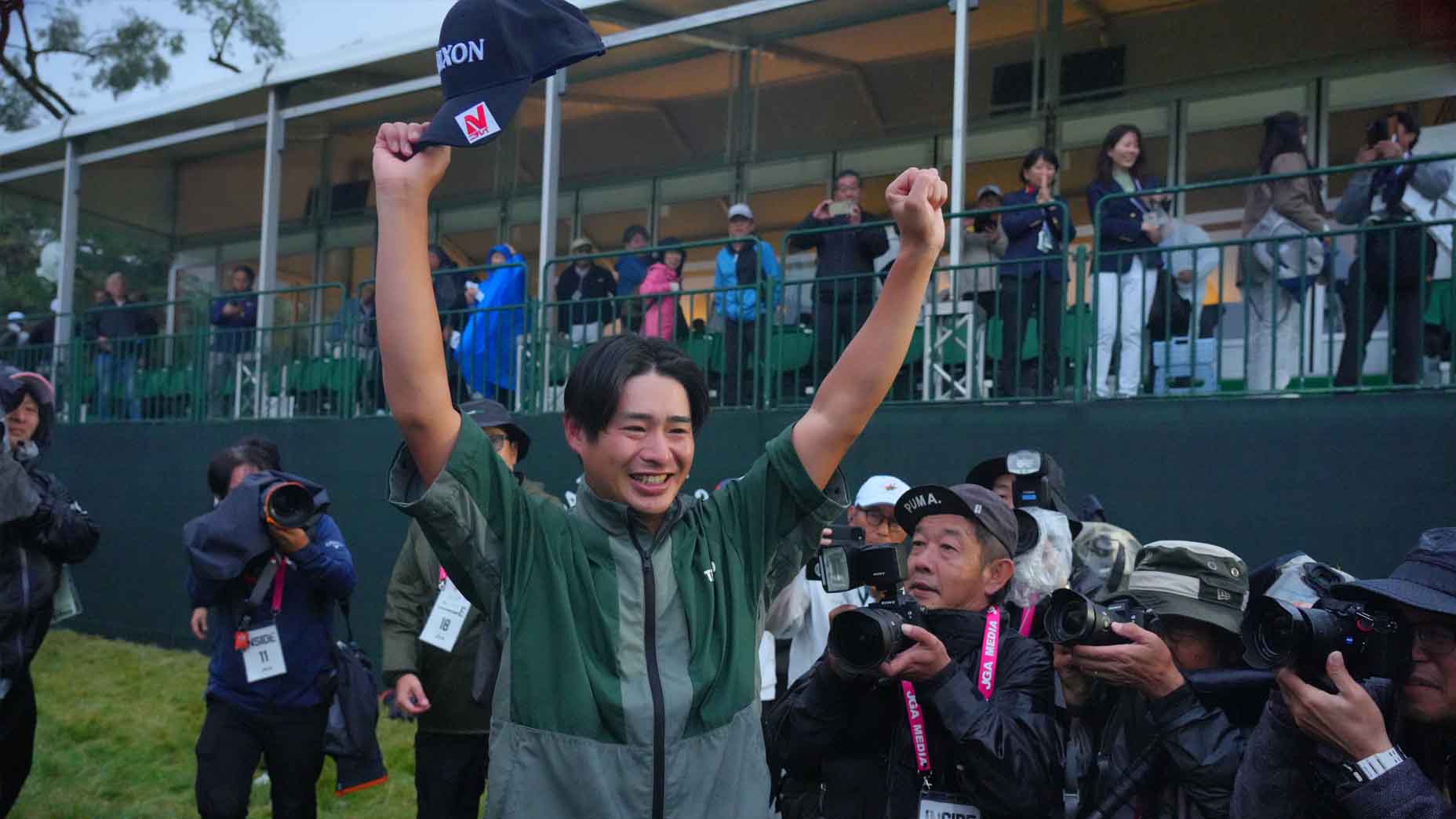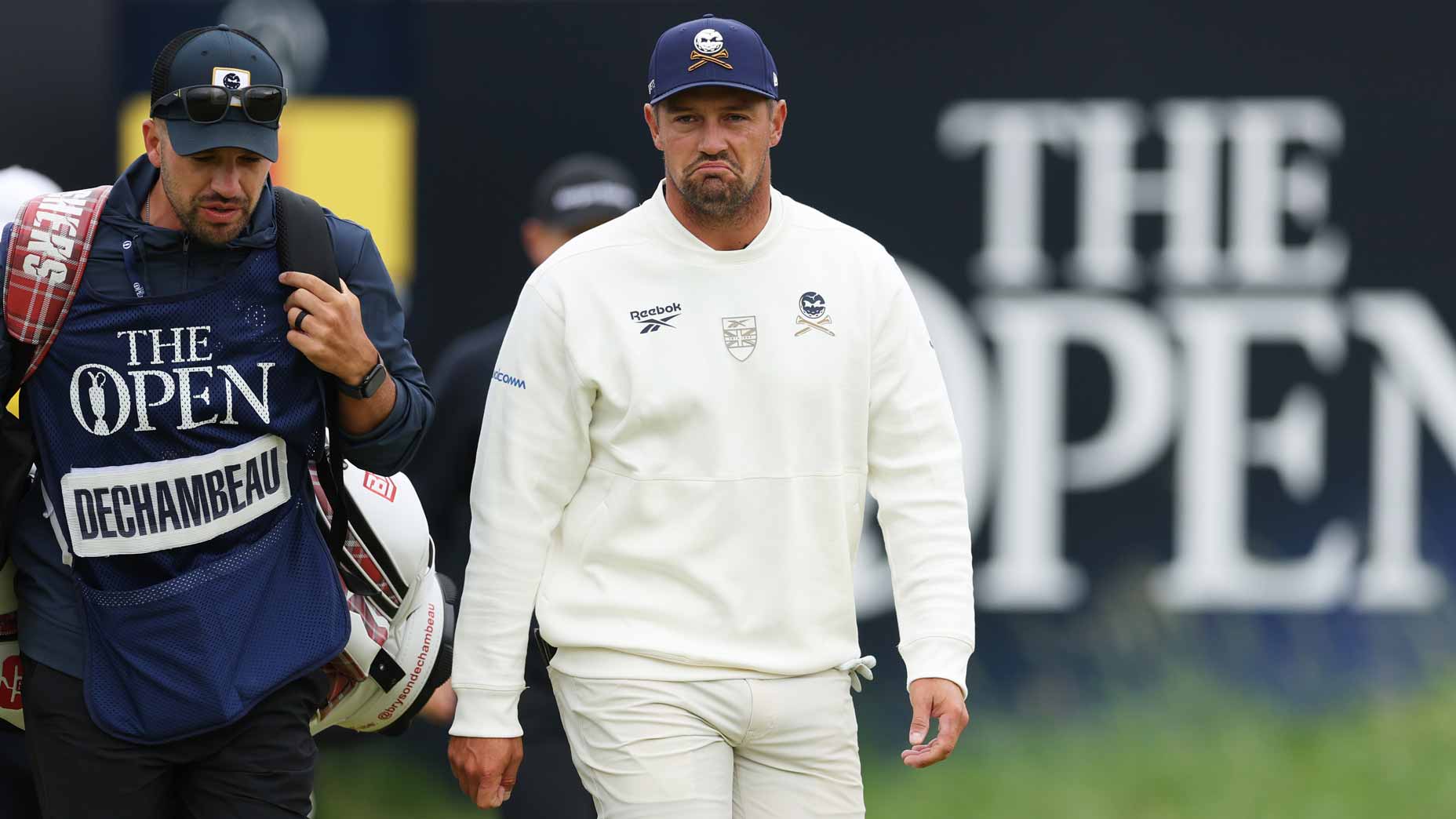TROON, Scotland — Wednesday night was cool, breezy and dank, here on the west coast of Scotland. There was a rock-out garden party, stacked limos in the driveway, at a mansion near the course for this 152nd Open, Royal Troon edition. Some of the players, no doubt comforted by their signed contracts, were safely in their five-star rooms at the Marine Troon Hotel, glowing in the dusk light. Nice digs, if you can get them.
Ernie — Ernie Els — came to mind, from a July night at the 2004 Open, when he was trailing by a shot after three rounds. He and his wife and their young daughter walked past the Marine Troon and to their rental house in town, locals drawn to him like he was the Pied Piper of Hamelin. He signed and chatted and ambled along. Ernie never had the haughty gene. He was just a bloke with outsized talent. He was golf, and he is.
The American viewer at home, when watching a British Open — particularly one at Royal This or Royal That — sometimes thinks of golf’s homeland as crusty, patrician, covered in la-di-da and well-played-chum. There’s some of that, but a lot more of this: a white-haired gent that looks for all the world like Gerry McIlroy (but not), carrying a boxed pie out of the Troon Domino’s on Wednesday night; beered-up lads at the door at Girvan’s Bar; done-for-the-day shift workers, from Eastern Europe and relative newbies to Scotland, waiting on a bus.
The world’s best golfers, or many of them, are working-class blokes, too. Rory’s mother worked at 3M plant. Tiger’s father was an Army officer. Todd Hamilton’s parents owned a grocery store. Their son defeated Els in a playoff to win the 2004 British Open. He’s got his name on the old trophy forever. The Claret Jug. The word caddie comes from the French, too.
A hot wind has been blowing across much of the United States for much of the summer. What a nice break, to be here, in a long-sleeved shirt. This is trip number — I don’t know. I’m not counting. North of two dozen, anyway.
Leaving home, I was a little worried about my ball count. When the summer is wet here in Kingdom, you can’t have too many golf balls. The rough eats them. I pointed the car — a rental from Hertz, a five-speed manual transmission with a cigarette lighter and a beeping noise if you go two miles over the speed limit — past Troon, past Turnberry, to the wee course (5,000 yards) in Girvan, a harbor town with drydocked boats on the side of the road.

The last time the Open was at Turnberry, in 2009, I had dinner Saturday night with my friend Neil Oxman at the Marine Troon Hotel. Neil was staying there, in the Tom Watson Suite. Our dinner might have gone three hours, and we didn’t speak a single word about what might happen on Sunday. Neil was caddying for Watson and Watson was Turnberry’s Saturday night leader, by a shot. After 72 holes, as it played out, Watson was the co-leader. After 76 holes, he was the runner-up, at age 59. He came into the press tent and said, “This ain’t no funeral.” No, but it did feel like one. The sun was coming up as I left the press tent Monday morning. A tricky one. Stewart Cink deserved his due, but Watson was the story.
My friend and old Sports Illustrated colleague Gary Van Sickle was the first person to tell me about the Girvan Golf Course, 20 or 25 years ago. We were trying to remember the year but couldn’t. My vague memory was that Girvan was a 12-hole course but Gary got me straight: “Eight holes on the ocean, 10 holes somewhere in town, if you can find ‘em.” The first eight, he said, were “riotous fun.”
On Wednesday, I played the back 10 first. The greens are circles and slow and the traps have heavy, gritty sand in them, plastic toy rakes on their sides. Some holes have tee markers and there are little wildflowers, itty-bitty daisies, popping through the turf. The final hole is a short par-3 where you have to take dead aim between the groves of trees that guard the left and right sides of the tee.
From 18, I went to the first and played the riotous, oceanfront opening eight. The whole place brings to mind the Pacific Grove muni, up the road from Pebble Beach. I probably don’t even need to say this: I thought it was great, but your whole golf thing might be way different than mine. So don’t go by me.

I nutted a drive on the par-4, 300-yard 4th hole — downwind, perched tee, hard ground — and nearly reached the green. Well, 30 yards short. I nutted my tee shot with a driver on the par-3 7th hole and did so again on the par-3 8th, my last of the day. Both nearly fetched the green. Modesty should prevent me from sharing my scores on these two end-the-day par-3s but I can’t help myself: two pars.
As I came up the final hole, I saw a man I recognized. He had two dogs, a yellow lab and a black-coated pooch, and now he was on the narrow lane that fronts this part of the course. I had seen him earlier, walking with his dogs (no leashes) on the 6th hole, in the wispy rough, the border between the fairway and Van Sickle’s ocean, the Firth of Clyde. We exchanged nods and that was all.
Now we were crossing paths again. He was wearing running shorts and a T-shirt, undaunted by the sea breeze. “Did you want these?” he said in my direction. He had a green plastic bag in hand with the eight or 10 golf balls in it. They were gifts from the rough, unearthed on his evening walk. Now they are in the boot of my hire car.
Michael Bamberger welcomes your comments at Michael.Bamberger@Golf.com










